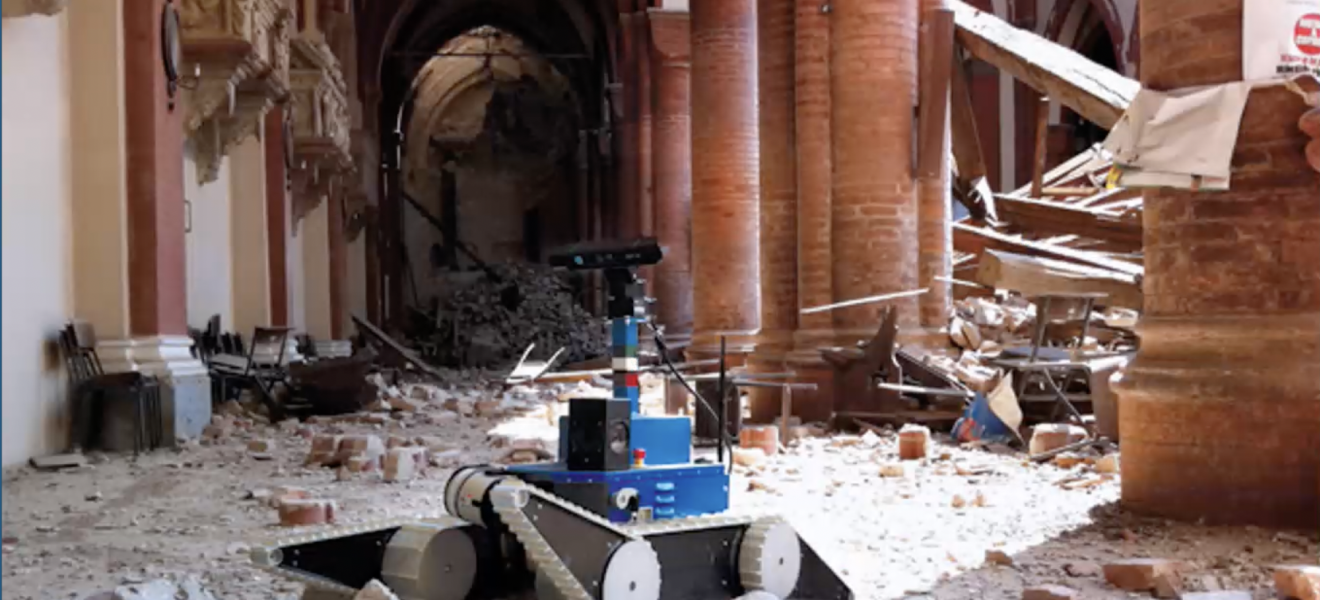Wentworth Student Develops Path Planning Program for Search and Rescue Robots

An image of a path-finding robot as shown in Andrew Hogan's presentation
Wentworth Institute of Technology student Andrew Hogan has developed a path planning program that can be used to simulate the movement of search and rescue robots in hazardous environments. The program, which is based on a visibility graph, can be used to generate safe and efficient paths for robots to follow in areas with static and dynamic obstacles.
Hogan, a graduate student in Applied Computer Science, developed the program as part of his thesis project. At Wentworth’s recent Graduate Student Showcase Night event, he noted that he has thought about how such a robot might perform in places like Syria or Turkey in the aftermath of catastrophic earthquakes.
Recognizing how difficult it can be for human rescuers in tight, hazardous environments filled with rubble and debris, Hogan felt that if he could develop a robot to navigate these situations safely and efficiently, it could help to save lives.
Hogan tested his program in various simulated environments. In each case, the program was able to generate safe and efficient paths for the robot to follow.
"There are five different environment types that I've created, and each environment becomes a little bit more complex than the previous one,” he said. “And environments become more complex by varying the obstacles that are present in both the quantity, as well as introducing dynamic obstacles as well.”
Hogan has completed co-ops for Axcelis Technologies and MORSE Corp.
